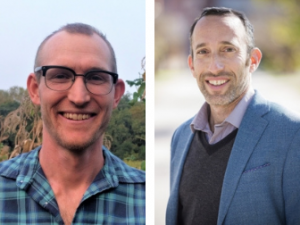It is well understood that mortality rates increase with age. Whether you live in Tokyo, rural Tennessee or the forests of Papua, New Guinea, the older you are, the more likely you are to succumb to any number of different ailments.
But how, exactly, do our bodies weather with age, and to what extent do people around the word experience physiological aging differently?
In a paper published in a special issue of the journal Philosophical Transactions of the Royal Society B, a team of anthropologists that includes Michael Gurven (right), a professor of anthropology at UC Santa Barbara and chair of the campus’s Integrative Anthropological Sciences Unit, and Thomas Kraft (left), a postdoctoral researcher in the same department, construct and compare a composite measure of “physiological dysregulation” among human populations and other species. The themed issue explores the evolution of aging among primates.
Physiological dysregulation refers to the wearing down of the body’s ability to bounce back from stress, damage or other adversity. Examples include how one’s body might gradually become less able to properly regulate blood sugar, or it might more likely mount an inappropriate immune response that doesn’t dissipate when the threat is gone (thereby damaging the body’s own cells). This decline in resilience is often considered fundamental to aging.
“We’re only now able to start piecing together what physiological aging looks like holistically in subsistence populations of foragers and farmers,” said Kraft, the paper’s lead author. “We first built a comprehensive metric of physiological dysregulation in humans, then compared it to other primates. It’s not just the case that adult mortality rates are lower in humans; rates of physiological dysregulation are much slower in humans, too.”
Click the link below to read the full article.







